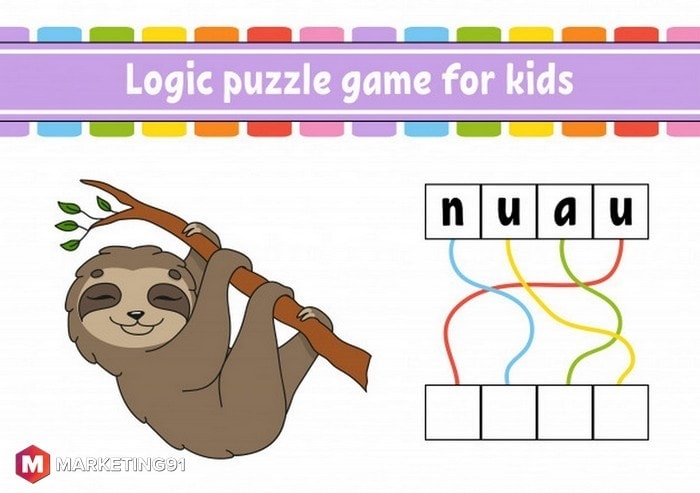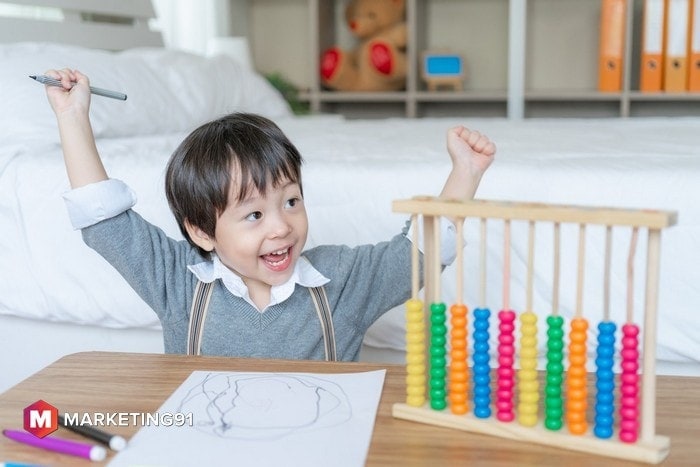Learning is an important part of human life. Learning starts as soon as a person is born, and a person keeps learning until he died. No matter what our habits, our skills, language, accent, thoughts, beliefs are, we have learned the.
Through learning. Different learning results in the unique personality of an individual. The behavior of people changes under the influence of the environment they spend their most time.
Learning can be defined as a process of obtaining new or existing information, knowledge, skills, values, preferences, etc. Learning is an inbuilt skill in a person.
Not only person but animals and plants also learn from the environment they spend most of the time you can see the difference between the habits of a pet dog and stray dog. According to a scientific study, it has been proved that plants also learn from their surrounding.
Sometimes we learn something through a single incident, and sometimes it takes several attempts and a lot of efforts to learn something. Moreover, different persons have a different style of learning and obtaining information, especially in the present time when education has become an important part of human life.
The style of learning impacts the overall learning, not a person, and it also plays an important role in the career-making of a person. In this article, you will learn about the important types of learning and how they work.
This might help you to understand which is your style of learning and once you are aware of your style of learning you can learn things better and quick, which can help you to excel in your studies or at your work or generally in life.
Table of Contents
Types of learning
1. Formal learning
The formal learning takes place in a more formalized environment such as in schools and colleges. In such environments, learning is goal-oriented, where students are required to learn certain lessons to obtain those results.
Learning is only considered successful only if students can get pre-decided results. For example, a student is required to obtain minimum 50% marks to pass the mathematics subject of 5th grade.
However, formal learning can be of different types as each student has a different style of learning and obtaining information. Let us learn about different types of formal learning, one by one.
1.1 Verbal learning:
Verbal learning is a type of learning where people learn new information by reciting it out aloud or by repeating it in front of a mirror or by writing the information again and again or highlighting the key points.
This is one of the most common types of learning, and teachers on their students even stress it without even knowing the learning style of students. People who usually love to learn words or rhymes or tongue twister usually have this type of learning style.
1.2 Visual learning:
You must have one or true classmates in your school who were good at visual learning. When other students struggle to memorize even small information, these people can accumulate a large chunk of information by arranging the information in the form of graphs or tables. People with this type of learning style are good with learning symbols, charts, boxes, tabular information, etc.
These people can learn the information better by reading the information or by looking at the pictures. They are also known to be good at observing. They learn languages, dance moves, rituals fast by observing them. You are a visual learner if you can remember information by looking at the pictures and graphs.
1.2 Physical learning:
In this type of learning, a person learners by physically involved in the activities. These people learn better when there are practicals involved in the learning process. They like to touch things, perform practicals, or build things to learn.
The physical learner finds it difficult to sit idle and keep themselves indulged in one or another activity.
1.4 Aural Learning:
Aural learning is a type of learning where a learner learns information by listening or hearing. The aural learner is those who learn things and establish a better understanding by listening to lectures in the lecture hall or classroom.
These students prefer to record lectures rather than making notes for revision. Rather than repeating the information, again and again, they ask their friends to recite information to them loudly.
At the workplace also, they listen to their instructor or supervisor to take instructions rather than reading from paper.
1.5 Social Learning:
This type of learning takes place in a group. Social learner like to learn and retain information in-group rather than studying alone. They prefer to discuss the topics thoroughly and generating new ideas by brainstorming in a group.
The social learner is your that one friend who always invites you to study with him or her. These learners perform well in group activities like sports.
1.6 Logical Learning:
This type of learning is found rarely in the people. Logical learners are those who ask a lot of questions on every topic, and they put a lot of efforts to learn the topic deeply. Logical learners think a lot and think abstractly.
Logical learners tend to more interest in subjects like science and mathematics, where answers can be provided by logic.
1.7 Solitary Learning:
Solitary learning is exactly the opposite of social learning. A solitary learner finds it difficult to learn in a group. They learn better when they are alone. They seek no distraction and zero noise when they study.
This type of learners usually prefer to spend most of their time alone, and they prefer to make notes, and they keep journals. Moreover, they spend a lot of time in self-analysis to establish a better understanding of themselves.
2. Informal learning
This is a type of learning that happens out of the classroom. A person learns informally from his or her daily day to day life experiences. He becomes more cautious when something goes wrong. For example, a person starts saving money once he has faced a difficult time.
A person who had a bad, bad accident pays more attention to the road while driving. You learn things from your own experiences or the experiences of others, and that learning turns you into a better person day by day. This is the reason it has been said that one learns with age.
3. Non-formal learning
This is also a type of learning that takes place outside the education system. Non-formal learning is quite similar to informal learning, yet there is a difference between them. The difference is that informal learning is not planned and intended; however, non-formal learning is planned.
This type of learning takes place when you spend time with other people, with people who have different culture and belief system than yours. For example, people who travel a lot and meet a lot of new people are wiser than the ones who have never traveled.
For example, when you join a club or society where people exchange their viewpoints and participate in various activities.
4. Non-associative learning
Non-associative learning takes place when a permanent change takes place to a single stimulus due to the repetition of the same activity. The non-associative learning can be divided into two categories as following
4.1 Habituation:
Habituation non-associative learning takes place when you become habitual of something. The probability of reaction decreases when a person is exposed to the repeated event.
For example, on the first day of your gym, you find it difficult to lift weights, but with lifting weights every day, your strength improves and you find them easy to lift.
Another example of habituation is you find it difficult to live in a noisy place, but with time you become habitual, and those noises stop bothering you.
The habituation non-associative learning takes place fast when stimuli are related at a high rate and are slow when stimuli are repeated at a slow rate.
4.2 Sensitization:
The meaning of sensitization is a condition to respond to A certain stimuli in a certain manner. As per this learning, a person becomes sensitive to small and weak stimulus once they have encountered with strong stimuli repeatedly.
5. Associative learning
In this type of learning, a person can learn to establish a relationship or association between two events or stimuli. Associative learning is a kind of conditioning which means a Person’s or animals behavior can be changed or modified on the basis of the stimuli or its reflex.
For example, offering the treat to a dog when he behaves in a good manner is an example of associative learning.
They will associate the good behavior with treat and contrary to that he might change his behavior when not given a treat for good behavior repeatedly. Associative learning can be categorized into two categories
5.1 Classical conditioning:
Classical conditioning is a process where a biologically potent stimulus is associated with the previously neutral stimulus to evoke a response to the neutral stimulus.
For example, a dog starts Salivating as soon as he sees his favorite food (which is a biologically potent stimulus) and does not salivate when here a bell ringing (which is a neutral stimulus).
During the conditioning process, both stimuli are presented to the dog at the same time, which means a bell is rung as soon as the dog is offered food. After repeating this process, again and again, the dog will become a condition to react when he hears the ring of a bell.
In this way, we associate a neutral stimulus with a biologically potent stimulus. This type of learning bis also used to teach manners to adolescents.
5.2 Operant conditioning:
This is a type of learning where the behavior of a person is changed or modified using reward or punishment. Operant conditioning is also referred to as instrumental conditioning.
Operant conditioning can either result in increased behavior when given a reward for a particular stimulus or result in decreased behavior when given punishment.
For example, the mischievous behavior of a child reduces gradually when he has scolded or a student score well at studies if he is rewarded every time he scores well.
6. Active Learning
This type of learning provides stronger results than any other type of learning. In active learning, a learner takes control of learning in his own hands. They decide their pattern of learning and choose subjects that they want to learn, or they want to leave.
They can learn a subject in depth. This type of learning work on the metacognition principle, where a learner has a deep understanding and awareness of his thought processes.
Active learning is student-centered learning, where the students take control of the subjects they learn. However, traditional learning is teacher-centered learning, where teachers control what students will learn, and students are taught to follow the instructions given to them.
Rather than following traditional education methods students should be inculcated with a metacognitive strategy so that they can accommodate knowledge new knowledge and retain it in Thier long-term memory.
7. Enculturation learning
This is a unique type of learning where people don’t go behind gathering knowledge but learn about the values and behavior of a culture that they live in. Parents and elders put efforts to inculcate these value in children from a young age.
The benefit of enculturation learning is that a person gets a stronghold on the native language, rituals, and values which bring them respect in the society that they are part of and keep them rooted to their own culture.
There are several examples of enculturation learning. Take the example of enculturation learning in your own home. You exactly know how to celebrate Thanksgiving and Christmas.
You have learned all these rituals associated with the celebration of these festivals from your parents from a very young age.
8. Acculturation learning
Acculturation learning is the opposite of enculturation learning. In acculturation learning, an individual learns the beliefs, values, ritual, and language of a culture other than his native culture.
There could be various reasons for acculturation learning such as one natural inclination towards the other culture, or he is required to learn two culture a different and prevailing culture along with his native culture in order to fit in the environment that he lives.
Acculturation learning is common in people who migrate out of their own country or town. They learn the culture that they later become part of and in the modern times, when people travel all around the world they learn about the culture that they liked, and another reason of acculturation learning is when people of two different cultures get married.
They learn about the culture of each other to spend life happily.
9. E-learning
E-learning is also referred to as augmented learning. E-learning takes place when individual use computers or digital platform in the learning process. Nowadays, e-learning has become very popular and is preferred by people more than the traditional style of learning.
In e-learning, people can take courses online by referring to online or digital content. Digital content can be defined as the study material available on the internet in the form of videos, audios, e-books, and PDF, etc.
Nowadays, creating digital content and also become one of the mainstream jobs because of the preference of people for e-learning.
Even though e-learning is quite informal like you are not required to sit in a classroom to take a lesson, you can learn your lesson anywhere and at any time of the day.
You can read at your speed. However, there is some familiarity between e-learning and traditional learning, such as practicing to get expertise, taking exams to get a certification, etc.
A person who learns online or on a digital platform is referred to as e-learner, and the teacher who teaches online is referred to as e-instructor. Moreover, e-learning can also be named as mobile learning or m learning when the e-learner uses his or mobile for e-learning.
10. Episodic learning
This is a type of learning where people learn through episodic experiences. It is referred to as episodic learning because people retain information collected through episodic learning into their episodic memory.
For example, a fear of fire that follows by after having a serious encounter with fire breakout. The surprising thing about episodic learning is that people can remember information collected through episodic learning with accuracy even having least intentions to memorize it.
This is because the brain of a person has more storage capacity for things that pay more attention to.
11. Rote learning
The meaning of rote learning, is to learn something by repeating it again and again so that the same information can be recalled whenever the learner wants to. This type of learning is vastly used by students to score a good grade.
Rote learning is good in some areas, but it is not always good, As a person pay more attention to learning the context and not pay much attention towards learning the meaning.
However, rote learning is useful in learning music, lyrics and is also useful in remember mathematical formulas.
12. Meaningful learning
Meaningful learning is the exact opposite of rote learning, as in meaningful learning a person pays more attention to the meaning of the information rather than the content and when required when can use this means learning to present in his style and not in bookish style.
13. Tangential learning
This type of learning takes place when a person teaches himself. For example, when a person influenced by a music video and tries to teach himself to play guitar. Tangential learning is also referred to as self-education and is one of the best ways of learning.
This type of learning style adopted by many famous scientists, musicians, etc. They taught themselves whatever they want to learn.
Liked this post? Check out the complete series on Careers







